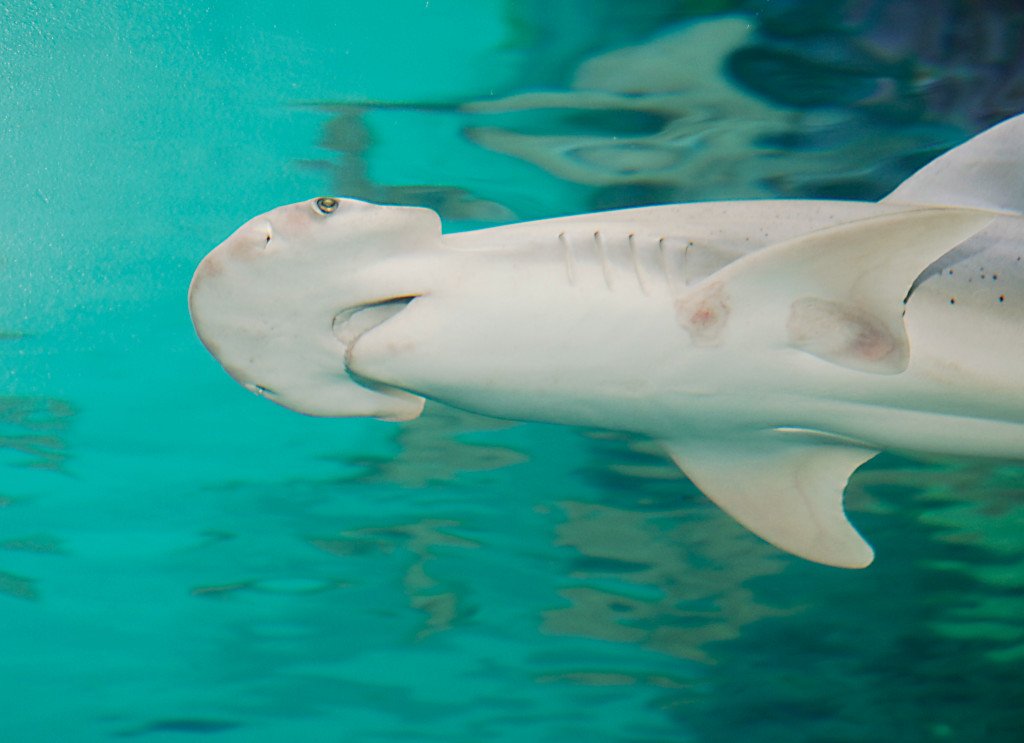Banner photo by Julie Larsen Maher
Bonnethead shark (Sphyrna tiburo)
with the remainder of Family Sphyrnidae as lookalikes
Proposed by: European Union, Brazil, Colombia, Ecuador, Panama
The Bonnethead shark (Sphyrna tiburo) has faced population reductions of up to 79% globally and is assessed as Endangered (EN) under the IUCN Red List of Threatened Species. In some regions, populations have declined by more than 80% within the last three generations and even suffered localized extinctions, exceeding the CITES Appendix II guidelines for marine species.
The Bonnethead shark is an inshore tropical hammerhead shark distributed in the western Atlantic and eastern Pacific Oceans. It is one of six small-bodied hammerhead species, and is an important mesopredator in coastal ecosystems. Like the large-bodied hammerheads, the Bonnethead shark is also exploited for the international fin trade, with their fins found occurring in the Hong Kong fin retail market.
Photo by Shane Gross
Declines in Bonnethead shark populations across much of its range are primarily driven by the global demand for their fins and meat. Additionally, their inhabitation of nearshore environments such as seagrasses, mangroves, estuaries, mudflats and coral reefs also mean that populations are susceptible to impacts of habitat loss and degradation. While the species is assessed as globally Endangered (EN) under the IUCN Red List of Threatened Species, severe declines in parts of its range have resulted in their Critically Endangered (CR) status in regional assessments. Despite the scale of the threats to survival faced by the species, there are currently no international-level protections for the Bonnethead shark. Inclusion of the Bonnethead shark in CITES Appendix II now would offer a chance for populations to recover and an opportunity for further research to identify where continued trades can sustainably continue.
Eliminating illegal trade in hammerheads
© Avi Klapfer
At CITES CoP16, 2013, three large-bodied hammerhead sharks, including the Scalloped hammerhead (Sphyrna lewini), Smooth hammerhead (Sphyrna zygaena) and Great hammerhead (Sphyrna mokarran) sharks were adopted by CITES parties into Appendix II of the Convention, as they were the only hammerhead species thought to be in international trade. Since then, updated research into the species composition of the international fin trade has detected an increasing presence of smaller, less expensive shark fins and fins from coastal and smaller-bodied shark species, including the small-bodied hammerheads.
Many CITES Parties, as well as the Animals Committee, have noted that this now presents an illegal trade loophole, with documented occurrences of listed hammerhead species being traded as unlisted ones.
To correct this, the EU has proposed that all remaining hammerheads (family Sphyrnidae) must also be listed onto CITES Appendix II alongside the Bonnethead as lookalike species, putting all nine described species of hammerheads under international trade regulations and eliminating this illegal trade loophole.


